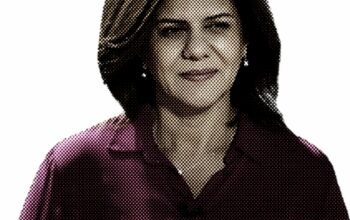“Peace appeals to the hearts; studies to the brain. Both are needed, indeed indispensable. But equally indispensable is a valid link between brain and heart. And that, in a nutshell, is what peace studies and peace practice are all about”.
That is the final part of the acceptance speech of Johan Galtung, after he was awarded the Right Livelihood Award, known as the alternative Nobel Prize for peace, in 1987, “For his systematic and multidisciplinary study of the conditions which can lead to peace”
In our previous articles about positive peace, we introduced the Norwegian pioneer of peace research Johan Galtung. He is a sociologist known as the father of peace studies, who has developed an academic understanding of peacebuilding. During his career spanning 70 years, he has authored and co-authored more than 1,600 articles and over 160 books related to peace issues and he has received many other prizes and accolades. Johan Galtung was also at the core of the group of intellectuals behind the establishment of the Peace Research Institute of Oslo (PRIO) in 1959 that was founded thanks to Galtung enormous effort and personality.
In 1964 Johan Galtung was the founding editor of Journal of Peace Research (JPR), an interdisciplinary and international bimonthly, covering scholarly work in peace research. It strives for a global perspective on peace and peace-making, with particular focus on the causes of violence and conflict resolution. Johan Galtung edited the journal for the first 12 years and laid out Journal of Peace Research’s vision of being multidisciplinary and international, and encompassing a broad conception of peace. He contributed strongly to the rapidly increasing prominence of JPR, and his articles: “The structure of foreign news”, “Violence, peace and peace research”, and “A structural theory of imperialism” are among the most cited and downloaded JPR articles of all time.
In 1993 Johan Galtung and Fumiko Nishimura founded the conflict mediation organization Transcend, which mission is to bring about a more peaceful world by using four pillars: 1) action, 2) education/training, 3) dissemination and 4) research. The aim of the organisation is to transform conflicts non-violently, with empathy and creativity, for acceptable and sustainable outcomes. Johan Galtung, as we said, is one of the main theorists in peace and conflict studies. He introduced the concepts of negative peace, positive peace, structural violence, and many other key concepts.
We will have a quick look at these ideas more in details in the paragraph below to better understand Galtung work. The negative peace is defined by the mere absence of war and does not capture a society’s tendency towards stability and harmony. Positive peace is defined by a more lasting peace that is built on sustainable investments in economic development and institutions as well as societal attitudes that foster peace. Positive peace has also become a measure of progress in the society and In order to further understand positive peace, it is important to understand structural violence. Structural violence, or indirect violence, is the result of social structures or institutions that prevent people from meeting their basic needs and accessing their basic human rights.
By cultural violence we refer, instead, to any aspect of culture which can be used to justify structural violence. Language, religion, ideology, and science are examples of parts of a culture that may mask structural violence, and even make it seem natural or right.
Galtung main areas of work were:
- conflict analysis and peace theory, and particularly on unresolved conflict as the basic underlying cause of violence, implying that conflict resolution by peaceful means is basic for peace;
- comparative civilisation theory, exploring the underlying implications for peace and development of occidental and oriental civilisations; – the generation of textbooks in general peace theory and general conflict resolution;
- development theory, including issues of ecology, health and peace;
- a new approach to economics that can more comfortably accommodate such major world goals as peace, development, human growth and ecological balance.
He is an experienced conflict manager and has mediated a lot of conflicts, as well as he has been actively engaged as a conflict resolution facilitator. His contributions to the field of peacebuilding include not only his prominent methodology in peacebuilding, based on diagnosis-prognosis-therapy, but also his triangular interrelated theory of violence: structural-cultural-behavioural. This structure is shown in the image below and we can see how direct violence is visible, while cultural and structural violence are invisible.

The thinking of the researcher Johan Galtung was affected by the pacifism of Gandhi, who tried to understand the root causes of violence and the nonviolent alternatives. In the diagram we can see the representation of some of the concepts highlighted above. The idea of peace as a positive construction preoccupied many peace thinkers and activists such as the economist Kenneth Boulding, who wrote about the need to establish stable peace. By stable peace, he meant a durable and resilient peace which minimised the risk of a relapse of the system into war.
In many ways, Galtungs’ theory of Positive Peace neatly encapsulates the philosophies of both Gandhi and Boulding. In his theory he stressed the importance of attitudes and institutions in actively improving the social, economic and political factors that promote peace. In this context, it is also essential to consider the long historical evolution of the concept of peace, which has been enriched by progressive definitions of its meaning and by ever-evolving methodologies for its implementation.
Johan Galtung was and still is a very important figure in his field and whoever wants to approach to peace research or to work with peace education and methodology should know about his continuous and enormous work. He didn’t only write about peace, he didn’t only debate about peace theoretically, but he experienced on the field what is like to build and maintain peace, as he was a mediator and conflict resolution facilitator for a long time and his efforts were really appreciated and worthy.
Giudi Aligi
References:
Right Livelihood, Johan Galtung
https://rightlivelihood.org/the-change-makers/find-a-laureate/johan-galtung/
Peace Research Institute Oslo (PRIO), Johan Galtung
https://www.prio.org/people/5704
Peace Research Institute Oslo (PRIO), Journal of Peace Research
https://www.prio.org/journals/jpr
Transcend International
https://www.transcend.org/#about
Vision of Humanity
https://www.visionofhumanity.org/introducing-the-concept-of-peace/
Demola Akinyoade, Peace Education (2011)
https://portal.abuad.edu.ng/lecturer/documents/1510560528Peace_Education_on_Nixty.pdf



